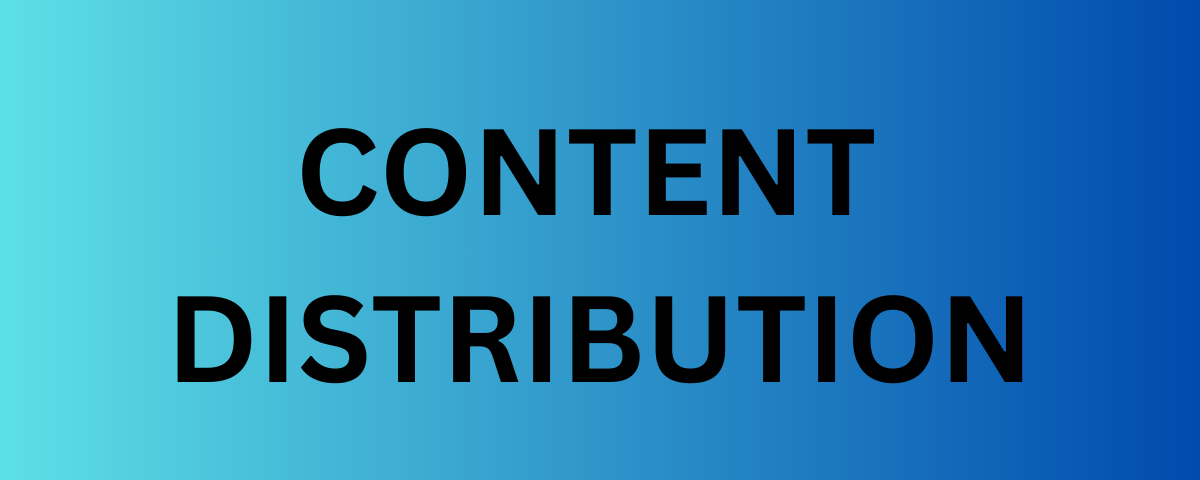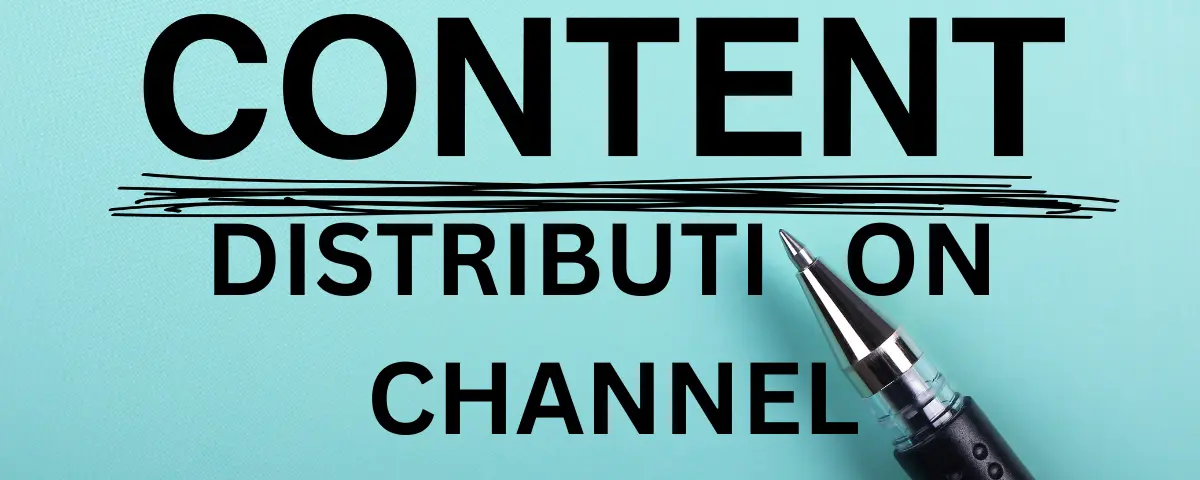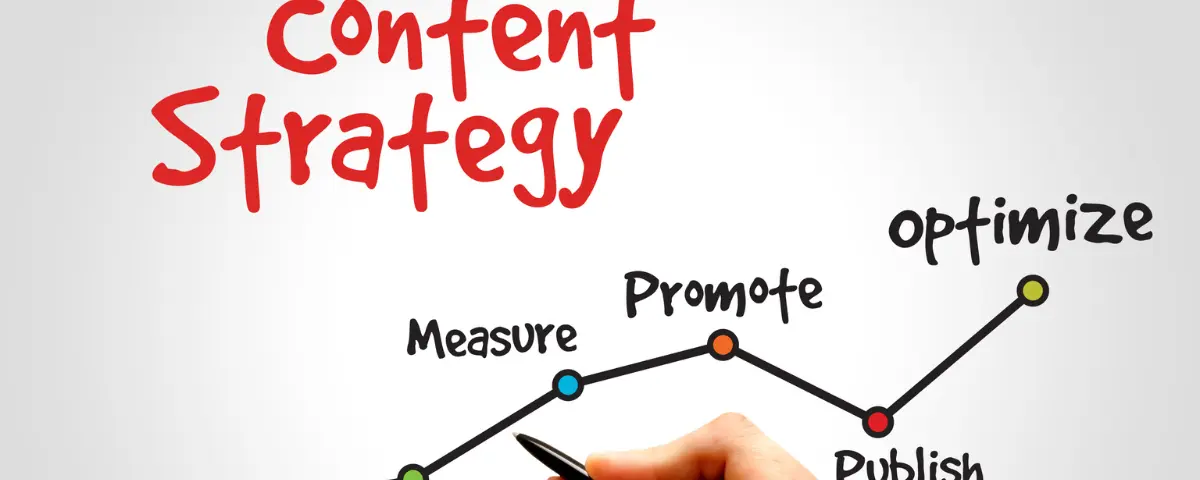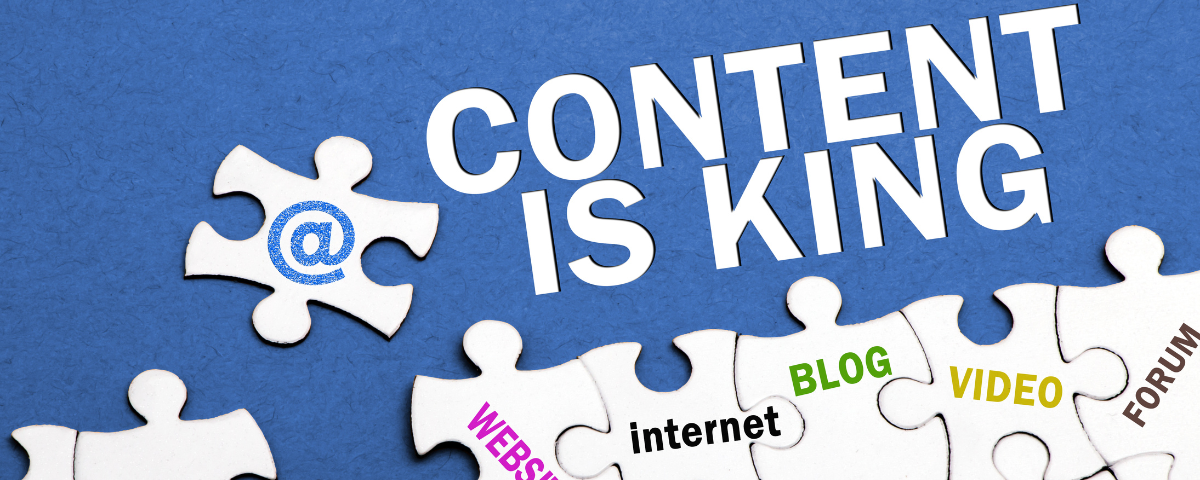You’ve created amazing content, but are you effectively distributing it to reach your target audience? Content distribution is often overlooked yet a crucial step in the content marketing process. It’s about strategically promoting your content across multiple channels to maximize visibility, engagement, and conversions. If you’re struggling with low traffic, poor lead generation, or lack of brand awareness, effective content distribution could be the game-changer you need.
In this blog post, we’ll dive deep into the world of content distribution, exploring its various distribution channels, content types and proven strategies to amplify your reach. You’ll learn how to leverage different tips to ensure your content doesn’t go unnoticed.
We’ll also share insights on optimizing your distribution efforts, tracking performance metrics, and continuously refining your strategy for maximum impact. By the end, you’ll have a solid understanding of how to create a robust content distribution plan that aligns with your business goals and drives tangible results.
What is content distribution?

Content distribution is the strategic process of promoting and sharing your content across multiple online channels and platforms to maximize its visibility, engagement, and reach with your target audience.
At its core, content distribution involves taking the valuable content you’ve created – blog posts, videos, social media updates, whitepapers, podcasts, etc. – and actively putting it in front of the right people through a variety of distribution methods and outlets.
Even the most well-crafted content can go unnoticed without proper distribution, failing to attract traffic, generate leads, or achieve your intended marketing goals. Effective content distribution ensures your target audience discovers your content when they need it most.
Why is content distribution important
Content distribution is essential in digital marketing as it serves as the bridge between creating valuable content and ensuring it reaches the right audience, maximizing brand exposure, driving website traffic, nurturing leads, and ultimately converting them into customers.
When you strategically distribute content across various social media channels, businesses can expand their reach, engage with their target audience, build brand credibility, and establish a strong online presence.
Get 50% Discount to Master ALL Aspects of Digital Marketing That Can Earn You $2,500 - $5,000 a month (Even if you are a complete beginner!)
Our students that intentionally implement what they learn from our digital marketing course make back the entire course fee within a single month or more after completing our course because our course gives them many income generating options with unlimited earning potential with no age or location barrier. The best part is no technical skills are required.
An opportunity to change your lifestyle and make money working from anywhere in the world. The results our students get from our digital marketing course prove this could be applied to any market or country and that it is designed for any skill level and work background.
*By signing up, you agree to our privacy policy and terms of service.
Effective content distribution increases visibility, fosters customer relationships, encourages interaction, and guides prospects through the buyer’s journey, making it a fundamental component of a successful marketing strategy in today’s competitive digital presence.
Types of Content You Can Distribute

When it comes to content distribution, you have a wide range of content formats and types to work with. The key is creating a diverse content mix and strategically distributing each piece across the most relevant channels.
Some common types of content that lend themselves well to distribution:
- Blog Posts – Informative, educational, or entertaining articles that can be shared on social media, email newsletters, content curation sites, and more.
- Videos – Video content like product demos, interviews, how-to tutorials, and branded videos for platforms like YouTube, Facebook, Instagram, and your website.
- Infographics – Highly visual and shareable data representations that perform well on social media and content publishing sites.
- Whitepapers/Guides – In-depth, authoritative resources ideal for content upgrades, lead magnets, and outreach to industry publications.
- Podcasts – Audio content that can be submitted to podcast directories, shared on social media, and promoted via blog posts or email.
- Social Media Updates – Engaging social media posts with images, videos, polls, or links to your latest content for platform-specific distribution.
- Webinars – Live or pre-recorded video presentations that can be repurposed into multiple content formats for extended distribution.
- Case Studies – Detailed examples of your products or services in action, distributable via email, website content, and sales enablement efforts.
- User-Generated Content – Reviews, testimonials, and other content created by your customers or audience for social proof and distribution.
The most effective content distribution strategies employ a diverse mix of formats to cater to different audience preferences and consumption habits across various channels.
Types of Content Distribution Channels

Content distribution channels are the various platforms and methods used to share and promote created content. These channels play a crucial role in reaching and engaging with target audiences effectively.
Owned Channels
These are the channels and platforms that you have direct control over, such as your website, blog, email lists, and social media accounts. You can publish content on your channel when you like and at any time and you have full control of the content published.
Types of Content:
- Blog posts
- Articles
- Whitepapers
- Case studies
- Videos
- Podcasts
- Infographics
- Email newsletters
- Social media updates
Benefits
- Full control over content and messaging
- Ability to build direct relationships with your audience
- Potential for lead generation and conversion tracking
- Long-term asset building for your brand
- Cost-effective and sustainable distribution
Earned or Shared Channels
These channels involve leveraging third-party platforms, influencers, and media outlets to amplify your content’s reach organically. Unlike owned channels, businesses do not have full access or control over distribution on earned channels. This form of content distribution leverages the credibility and influence of third parties to increase brand exposure and engage with a wider audience effectively. We also have forums and communities like Reddit or Quora — while posting on these sites is free, the content is owned by these third parties and therefore falls under earned channels.
Types of Content
- Guest posts
- Public Relations
- Contributed articles
- Product reviews
- Influencer collaborations
- Social media mentions
Benefits
- Exposure to new, highly targeted audiences
- Increased credibility and social proof
- Backlink opportunities for SEO
- Potential for long-term partnerships and collaborations
- Cost-effective way to tap into established audiences
Paid Channels
These channels involve investing in advertising and sponsored content opportunities to amplify your reach and target specific audiences in order to drive traffic to your website.
Types of Content
- Sponsored content
- Pay-Per-Click (PPC)
- Display Advertising
- Native advertising
- Paid Influencer Content
- Influencer marketing campaigns
- Content syndication.
Benefits
- Precise targeting capabilities based on demographics, interests, and behaviours
- Ability to amplify high-performing content and campaigns
- Measurable ROI and conversion tracking
- Faster audience growth and visibility
- Opportunity to test and optimize content distribution strategies
If you want to learn how to create content, and distribute your content to reach your preferred target audience then, click here to learn how we can help you achieve that.
Step to Create a Content Distribution Strategy

Building an effective content distribution strategy ensure that your valuable content reaches the right audience. This also helps to achieve your desired marketing and business goals.
let’s go through the content distribution strategy:
1. Define Your Goals and Target Audience
This involves researching and defining your audience’s demographics, interests, behaviours, and motivations to create content that resonates with them.
When you identify the group most likely to be interested in your content and align your message with their preferences, businesses can craft compelling content that engages their audience effectively and drives successful content distribution strategies
2. Audit Your Existing Content and Distribution Channels
You should audit your existing content and distribution channels, it’s essential to take stock of the content you already have and analyze its performance across various platforms.
This involves assessing metrics such as engagement rates, traffic sources, conversion rates, and overall effectiveness to determine what content is resonating with your audience and driving results.
By identifying what’s working well, you can replicate successful strategies, optimize underperforming content, and tailor future content creation to align with your audience’s preferences and behaviours.
3. Develop a Content Distribution Mix
Based on your goals and audience insights, determine the optimal mix of owned, earned, and paid distribution channels. This could include social media, email marketing, influencer outreach, content syndication, paid advertising, and more.
- Owned Media Channels: These are platforms that a business owns and controls, such as websites, blogs, and social media profiles. Content is directly published and promoted on these platforms to reach the target audience.
- Earned Media Channels: Earned media channels involve content being shared by others, such as social media shares, backlinks from other websites, and mentions in the press. This type of distribution helps increase content visibility and reach a wider audience.
- Paid Media Channels: Paid media channels require businesses to pay for content promotion, including social media ads, sponsored content, and pay-per-click (PPC) ads. Paid distribution helps target specific audiences and drive more traffic to the content.
4. Create a Content Distribution Calendar
Creating a content distribution calendar involves planning and scheduling content distribution efforts in advance to ensure a strategic and organized approach.
When a business develops a content calendar, businesses can outline when and where specific pieces of content will be distributed across various channels, such as social media, email marketing, blogs, and more.
This structured timeline helps maintain a consistent measure of content delivery, ensuring that audiences receive a steady flow of valuable information and engagement.
Additionally, a content distribution calendar allows for better coordination of marketing activities, alignment with key events or campaigns, and optimization of content release timings for maximum visibility and impact.
5. Optimize Content for Each Channel
Tailor your content format, messaging, and visuals to suit the specific requirements and best practices of each distribution channel.
Also, make sure you are optimizing your content by following the best SEO practices before publishing the content on social media.
For example, optimize your blog or post in a good format, check the meta descriptions and images for social sharing, create audiograms for podcast distribution, or repurpose blog content into videos based on each channel’s format and requirement.
6. Build Relationships and Leverage Influencers
To build relationships and work with influencers, start by connecting with key people, popular industry websites, and communities that are important in your field. By doing this, you will get the opportunity to relate with your target audience and know what they want from your brand.
Also, partnering with influencers allows you to reach their active followers, expand the reach of your content to a wider audience and get more traffic to your business.
This collaboration with influencers allows you to leverage their credibility and connection with their followers to boost the visibility and impact of your content.
7. Leverage Paid Promotion Strategically
While organic distribution should be the foundation, strategically use paid advertising and sponsored content opportunities to amplify high-performing content, reach new audiences, and drive specific marketing objectives.
When you combine organic and paid strategies, you can maximize the impact of your content and drive meaningful results in your marketing efforts.
8. Measure, Analyze, and Refine
Continuously monitor and analyze the performance of your content distribution efforts across various channels. Use data and insights to refine your strategy, double down on what’s working, and experiment with new tactics or channels as needed.
Remember, an effective content distribution strategy is an ongoing process that requires consistent effort, adaptation, and a willingness to experiment and learn.
Tips for Successful Content Distribution

1. Repurpose and Reformat Content
Don’t just distribute a piece of content once. Repurpose it into different formats (video, infographic, podcast, etc.) to maximize reach across multiple channels and cater to different audience preferences.
2. Encourage Social Sharing
Make your content easy to share by including social share buttons, click-to-tweet links, and visually striking media. Incentivize sharing through giveaways or user-generated content contests.
3. Optimize for Search Engines
Ensure your content is optimized for search engines through keyword research, meta tags, alt text, and internal/external linking. Search remains a powerful content distribution channel for you to reach a wider audience.
4. Experiment with New Channels
Don’t get complacent. Continuously test new distribution channels and tactics based on emerging trends and audience behaviour shifts. Early adoption can give you a competitive advantage over your competitors..
5. Build an Email List
An engaged email list is a valuable owned distribution channel. Use lead magnets, content upgrades, and sign-up incentives to grow your list and nurture subscribers with great content.
6. Create Content Partnerships
Collaborate with complementary brands or publishers to co-create and distribute content, reaching new audiences through trusted sources while sharing resources and workloads.
7. Embrace Automation and Tools
Leverage content distribution tools and automation to streamline processes, schedule posts across channels, monitor engagement and analyze performance data more efficiently.
How to Choose Between Content Distribution Channels
To pick the right content distribution channels, start by knowing your audience and where they hang out online. Match your content type with suitable platforms—like images on Instagram or business stuff on LinkedIn.
Check which channels are popular and fit your goals, whether it’s getting noticed, finding leads, or building a community. Look at what your competitors are doing on these platforms to spot opportunities or gaps.
Keep an eye on the ever-changing world of online spaces and stay updated on trends. Find a balance between big platforms and smaller ones that your audience likes. This way, your content can make a big impact in lots of different online places.
Content Distribution Tools and Platforms
Tools
- Social Media Management Tools: Tools like Hootsuite, Buffer, Sprout Social, and SocialPilot allow you to schedule and publish content across multiple social media platforms, track performance metrics, and engage with your audience from a centralized dashboard.
- Email Marketing Platforms: Tools such as MailChimp, Constant Contact, and HubSpot enable you to build and segment email lists, create visually appealing email campaigns, automate email sequences, and analyze open rates and click-through data.
- Content Scheduling and Automation Tools: Tools such as CoSchedule, and Hootsuite Campaigns allow you to schedule and automate content distribution across multiple channels, ensuring a consistent publishing cadence and maximizing efficiency.
- Paid Advertising Platforms: Platforms like Facebook Ads, Google Ads, and LinkedIn Ads allow you to promote your content through targeted paid advertising campaigns, reaching specific demographics and interests with precision.
Platforms
- Instagram: A visual-centric platform for sharing images and videos, ideal for engaging with a younger, visually-oriented audience.
- Facebook: A social media platform that allows you to share and promote content to a wide audience.
- Twitter: A microblogging platform that enables you to share short updates and engage with your audience.
- LinkedIn: A professional networking platform where businesses can share industry insights, thought leadership content, and connect with a B2B audience.
- Medium: A blogging platform that allows users to publish long-form content and reach a wide readership interested in diverse topics.
- Reddit: A niche community platform where users can share and discuss content on various topics.
- Quora: A question-and-answer platform where users can share their expertise and insights on specific topics.
Conclusion
Content distribution is the pivotal link between creating valuable content and ensuring it reaches the right audience. You need to understand how content distribution empowers creators to strategically share their work across diverse platforms, maximizing visibility and engagement. By grasping how it works, one can tailor their approach to fit the preferences of their target audience. This will make it easy to drive the desired outcomes. The key lies in selecting the right channels, optimizing content for each platform, and staying adaptable to evolving trends.
All you need to do is acquire and hone relevant digital marketing skills by enrolling in some or all of the courses listed below.
FAQs
How can businesses optimize their owned channels for content distribution?
Businesses can optimize their owned channels by ensuring consistent and high-quality content, utilizing SEO strategies, engaging with their audience, incorporating visual elements, and promoting content across various platforms to maximize reach and engagement.
Are paid channels effective for content distribution?
Paid channels can be highly effective for content distribution as they allow businesses to target specific audiences, increase visibility, drive traffic, and generate leads through methods like pay-per-click (PPC) advertising, sponsored content, and social media ads.
How can businesses measure the success of content distribution efforts?
Businesses can measure the success of their content distribution efforts by tracking key performance indicators (KPIs) such as website traffic, social media engagement, conversion rates, lead generation, and overall return on investment (ROI).
How do you set an effective content distribution strategy?
To set an effective strategy, businesses should define clear goals, identify target audiences, choose appropriate distribution channels, create high-quality and engaging content, monitor performance metrics, adjust strategies based on data insights, and continuously optimize their approach to maximize reach and engagement.
More resources
Content Marketing Strategy for Nigerian Businesses
Content Marketing Drive Action Instead Of Reaction With These 4 Tips
5 Straightforward Tips For Improving Website Content


